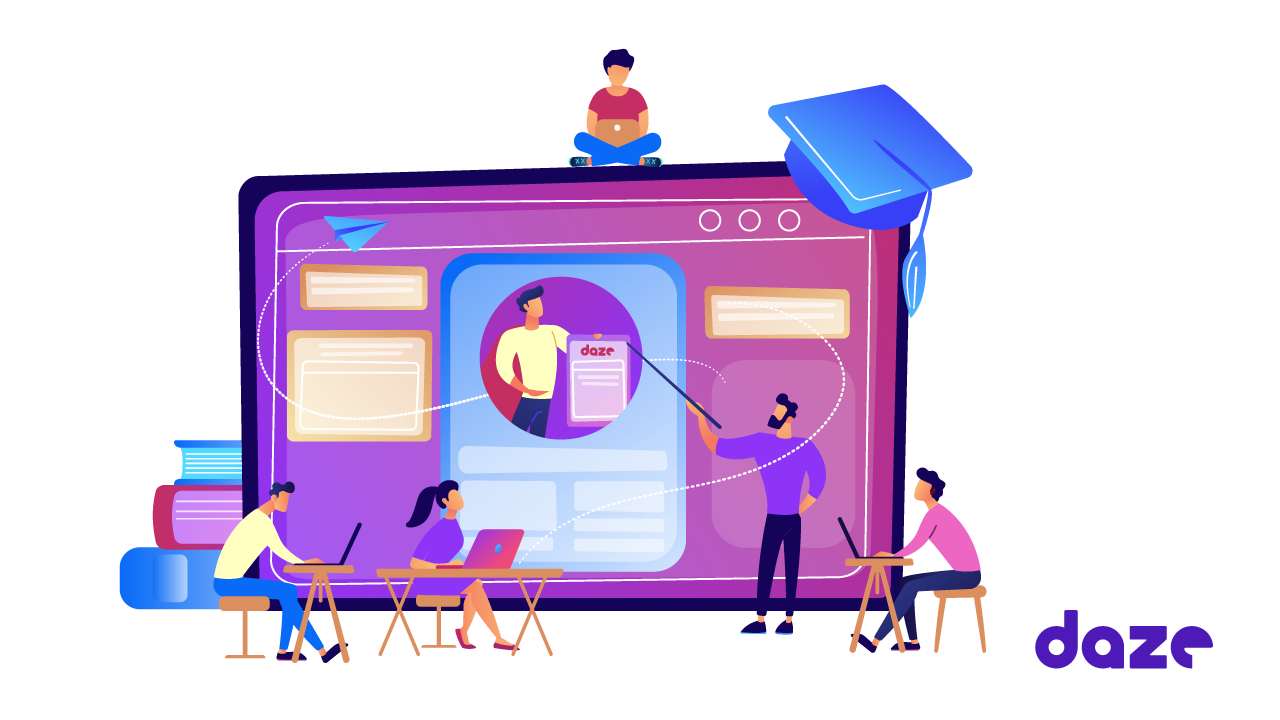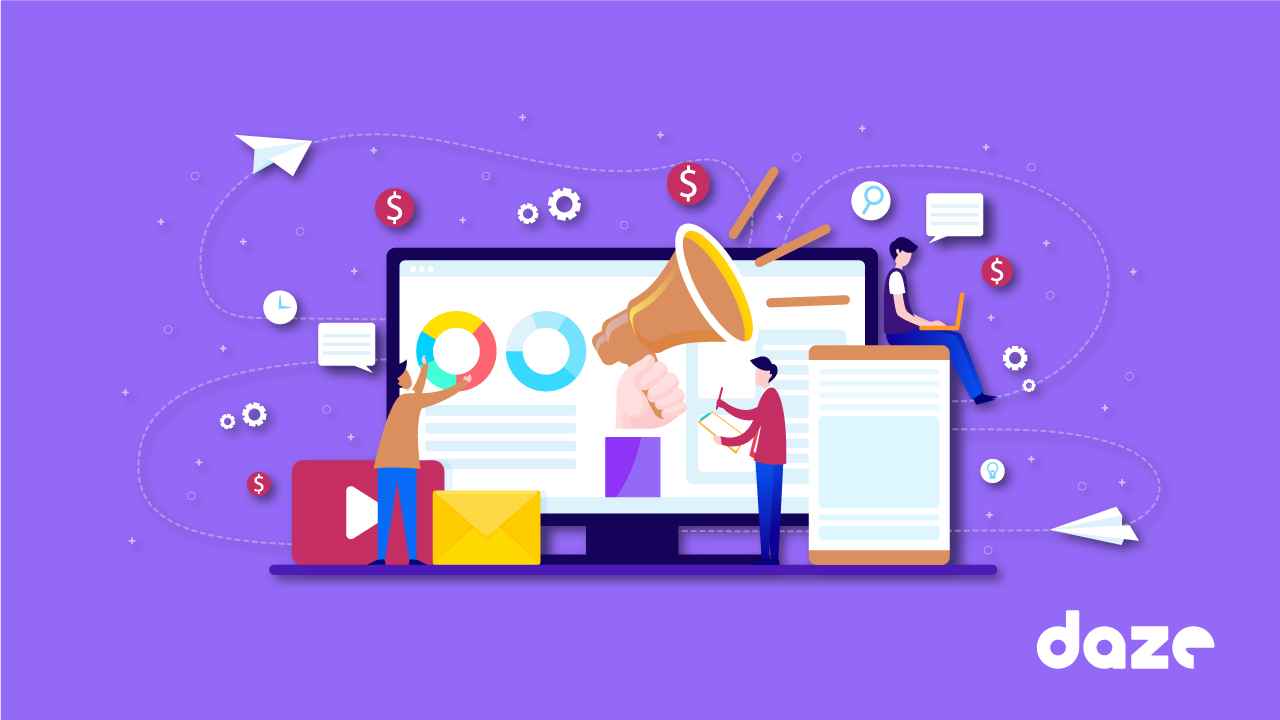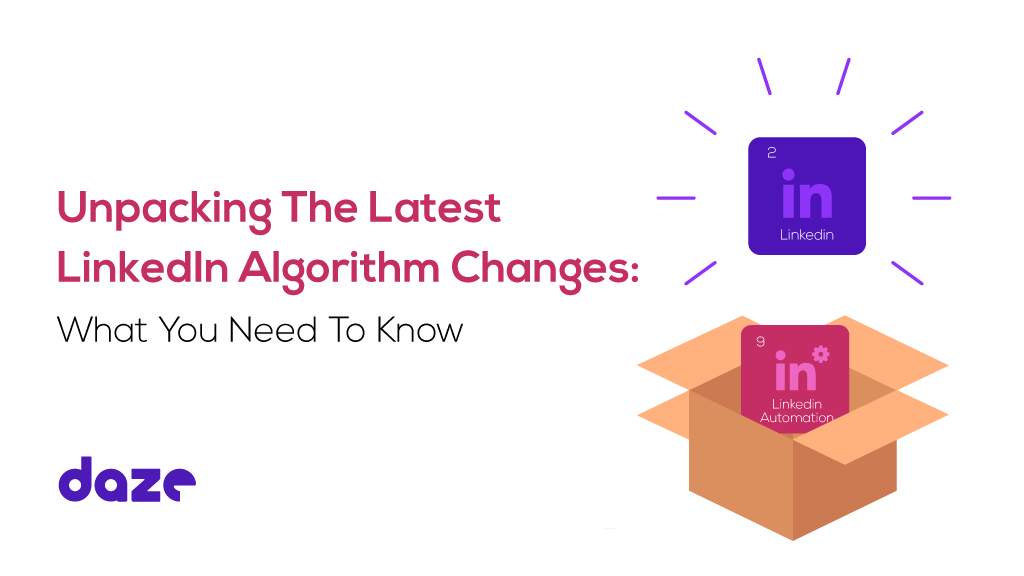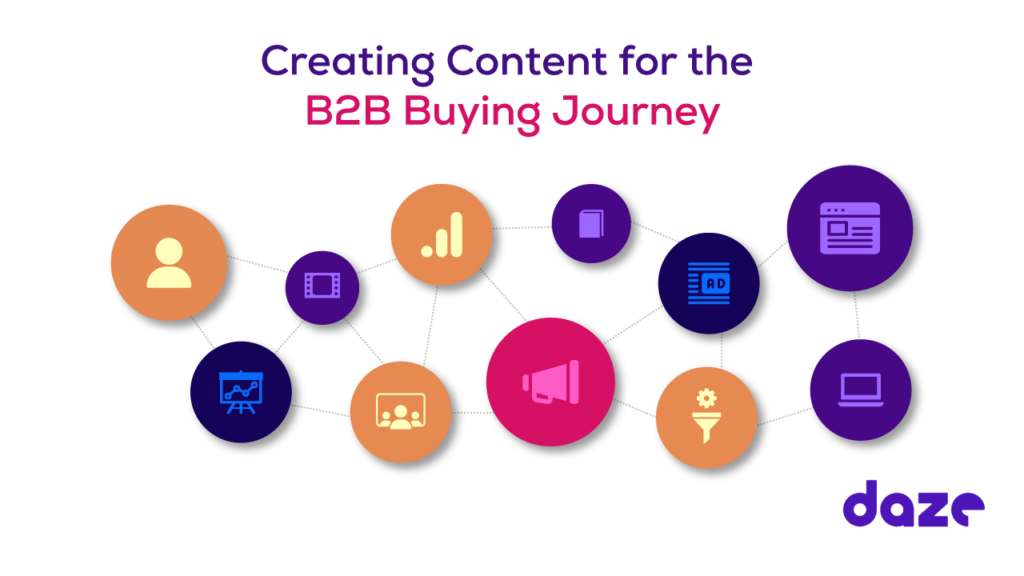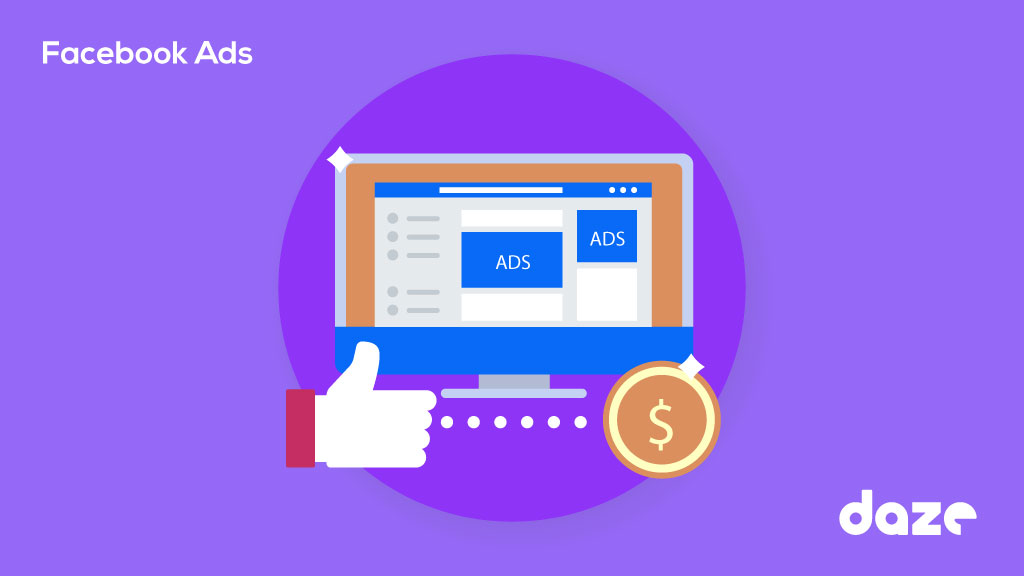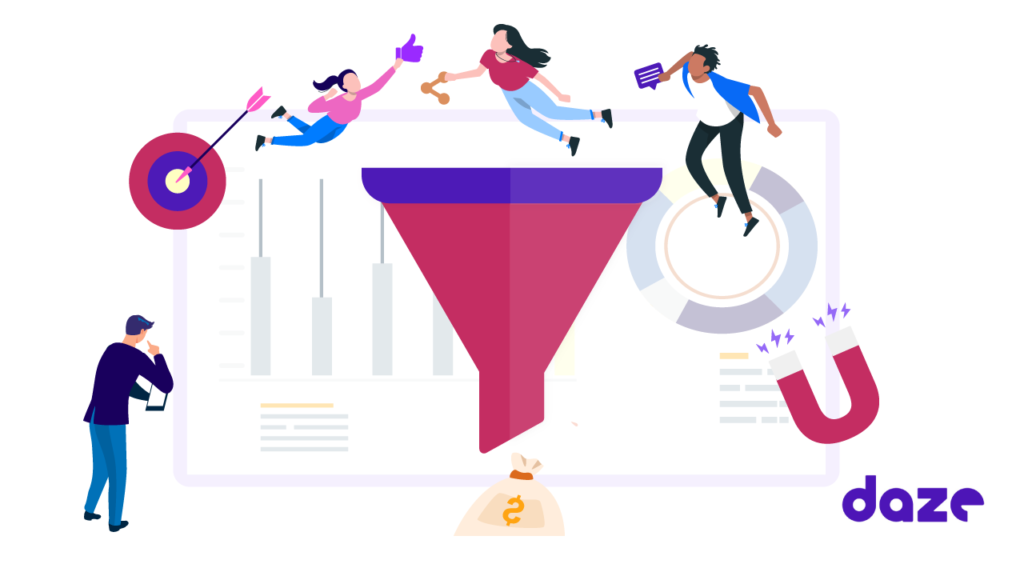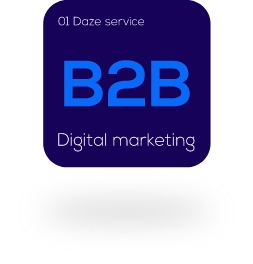Customer retention and lead generation are the two primary ways to drive business growth. Building a solid base of loyal repeat customers may be softer on the budget than bringing in new customers. Still, ultimately your business will not grow if you don’t also expand your customer base.
Demand creation is especially critical for startups, high-tech, and SaaS companies as you need to build awareness and generate excitement about your new product or service that your target personas are not yet looking for.
Companies need to do more than generate leads in today’s super-competitive marketplace. Demand creation is a more powerful way to build a robust pipeline with qualified leads and accounts that convert into sales.
This article will cover:
- What is brand awareness?
- What is demand creation?
- Demand creation vs. lead generation
- Brand awareness content
- Demand creation content
- Demand creation content vs. brand awareness content
Brand Awareness: What Is It?
Brand awareness focuses at the top of the funnel. Unfortunately, building brand awareness is not always prioritized by company execs who see it as a B2C strategy. However, you need to start at the top to nurture leads through the buyer funnel. If you reach out to a potential customer and they’ve never heard of you, you’re less likely to close a deal.
Brand awareness strategies create an instant connection or recognition between your company and your target personas.
Some examples of B2B companies with strong brand awareness include Salesforce, GE, Adobe, Microsoft, HubSpot, Apple, and Cisco.
A strong brand awareness ensures that your company’s name will immediately come to mind when your target personas enter the research stage in the buyer funnel.
Demand Creation
“Great marketing makes markets.” Robert Rose
Demand creation focuses on the early part of the buyer journey–before your customer personas reach the “we have a problem” stage. You’re not waiting for customers to come to you. Instead, you’re taking the initiative to reach customers who don’t even know they need your product or service.
Demand creation content needs to carry you through several journeys beginning with creating awareness that you have a product or service that solves specific problems. Next, you want to build confidence and trust in your solution, leading to an interest in finding out what your product can do for them.
Demand creation requires a cohesive partnership between your sales and marketing teams.
Consider this example:
You make a product video promo and you publish it on LinkedIn or Facebook.
Your target persona sees it.
They’re not looking for this product, but because your video is so engaging, they watch it.
They might then click on your website to learn more about this product.
Once there, they’ll learn that this product can really improve their performance in ways they hadn’t thought about.
They’re ready to move to the next stage in the buyer journey.
Lead Generation vs. Demand Creation
The terms demand creation and lead generation are sometimes used interchangeably, but they are not the same.
Lead generation is focused on capturing leads and moving them through the sales funnel. The primary goal is conversion.
Demand creation utilizes data-driven strategies to create a buzz around a product or service that results in an increased demand for it. The goal is to build and nurture viable prospects for the long term.
Brand Awareness Content
What Are Your Goals?
Brand awareness is about associating your brand name with a product. For example, even though Q-tips is a brand name, most people will ask for a Q-tip even if they just want a cotton swab. Another example is Google. The term has become a verb–” just google it.” Of course, there are other search engines, but the brand name Google is synonymous with online research.
Content Types
Research shows that it takes at least seven impressions before a person will remember your brand name. Therefore, you need an omnichannel content campaign that consistently presents your brand across all relevant digital channels to maximize exposure to your brand name.
Begin by defining your customers’ personas and create content for every stage of the buying journey.
- Focus on value rather than selling.
- Educate your audience with original, timely, and authentic content.
- Address your target customers’ priorities.
- Define your brand’s uniqueness.
- Give away your expertise, such as free ebooks or white papers.
- Craft your messaging in such a way that you build a positive relationship with your audience.
Examples of brand awareness content include:
- thought leadership content [white papers, podcasts, blog posts, social media posts]
- industry updates
- free tools such as templates or extensions
- storytelling videos
- webinars.
How Do You Measure Brand Awareness?
Brand awareness is more difficult to measure. However, it’s still critical that you set specific goals for your campaign.
Establish the KPIs you’ll use to evaluate progress toward your goals.
Your KPIs should be specific to brand awareness. For instance, more traffic on your website would not necessarily tell you if your brand awareness campaign is working. However, customer responses to awareness surveys would.
Other metrics include
Branded search volume–the number of times customers find your site by direct search [typing in your company name vs searching for a product.]
Social listening–are people talking about your company on social channels, including dark social sites like Reddit and Slack?
Content For Demand Creation
Marketing Goals
In previous articles, we’ve discussed the evolution of the B2B buyer process. B2B buyers are digitally savvy and search for what they need online before reaching out to a salesperson. Therefore, the only way to create demand for your product or service is to ensure that when your target persona is searching around on the internet, your company pops up early in the search results. For this, you need a robust demand-creation content strategy.
Demand Generation Content
Demand creation content should get your target audience excited about your product or services. By addressing their pain points through informative, engaging, keyword-optimized content, your readers will be inspired to take action.
The key to success with demand creation is to know your target customers.
- Work together with your sales team to create buyer personas.
- Set clear targets for advertising and content campaigns.
The process will be more challenging because you’re not selling to an individual but rather to a buying committee. Therefore, you’ll need to reach not only the user of your product but possibly the team leader, department manager, CFO, CEO, and a team of technical experts. Understanding each of the players involved in the buying committee will enable you to create content that addresses each player according to their pain points:
- specs and features benefits
- financial benefits
- cost-saving
- efficiency
- bottom line savings.
The CEO may want to know more about your company–history, reputation, leaders, etc.
Once you have developed all the possible pain points for all group decision-makers, you’ll be able to create and produce organic and paid content that is relevant to their unique interests and needs.
Conduct keyword research to find out what your target personas are searching for. Optimize your content for those keywords to draw those searchers to your website.
Create content that shifts consciousness. For example,
“you already know our product does X, but did you know that #% of companies in the XYZ industry are dealing with [specific challenge]? And did you know that our product fixes that too?
Demand creation content should be freely available and distributed across as many channels as possible. However, be careful to create a frictionless content consumption experience to avoid any negative experiences.
Examples of demand creation content include:
- blog articles that inform your target audience about trends in the industry, including discussions on future challenges and opportunities
- thought leadership content that focuses on the priorities of your target audience
- free tools
- interactive and entertaining content
- Google ads and social media advertising that highlights your new products or services or how existing solutions can solve emerging problems.
What Should You Measure?
As with your brand awareness campaign, you want to set KPIs to measure the success of your demand creation content marketing campaign. Since demand creation focuses on revenue growth, you’ll mostly like want to track,
- Content performance
- Increase in sales that can be traced to demand creation marketing
- High-quality sales generated by demand creation marketing
- Customer lifetime value
- Marketing qualified lead
- Conversion rate
Demand Generation vs. Brand Awareness Content: You Need Both
To grow your business you need both brand awareness and demand creation content.
Creating demand is a proactive strategy to generate awareness of a gap or challenge that your customers were unaware of. You’ll capture your customers’ interest in your products or services before they begin searching for solutions.
Brand awareness builds familiarity with your brand, helps your target customers understand what you can do for them, and creates a connection in their memory between a product or service and your company name.
Data-driven brand awareness and demand creation content is the best way to reach your business growth goals.


